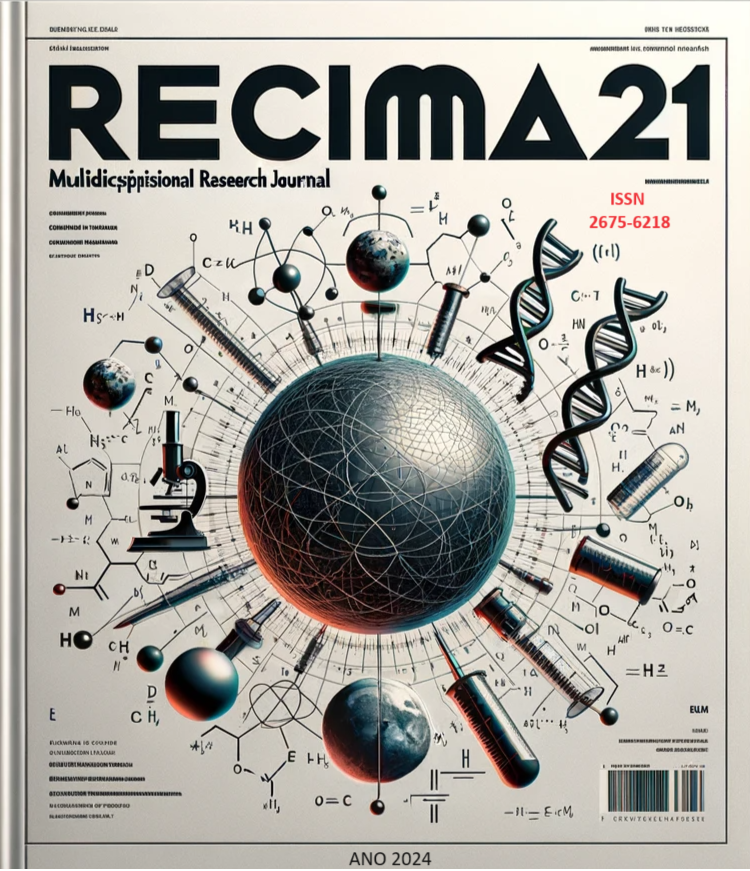CERVICAL CANCER IN BRAZIL: AN ANALYSIS OF DISPARITIES IN SCREENING ACCORDING TO EDUCATION
DOI:
https://doi.org/10.47820/recima21.v5i9.5604Keywords:
Uterine Cervical Neoplasms, Cervical Cancer, Uterine Cervical Erosion, Squamous Intraepithelial Lesions of the CervixAbstract
The Cervical Cancer Information System (SISCOLO) is an important tool for monitoring the prevention and treatment of cervical cancer (CCU), however, many women are still not fully adherent. Method: Ecological study with secondary data regarding the reason for carrying out the exam (tracking, repetition and follow-up) in Brazilian women aged 25 to 69 and associated factors (2013-2022). Data collected on the DataSUS website. Results: Analyzing education, a statistical difference was noticed between women with completed secondary education and those who were illiterate (p=0.040). According to the regions, the total number of exams showed no statistical differences. The majority of exams carried out are for Screening and no statistically significant correlation was found between education and reason for Screening in any of the regions (p > 0.05). Discussion: It is possible to infer that education is not directly related to the rate of carrying out oncotic cytology exams, different from what Garbanati and collaborators (2019) mention when mentioning that the performance of exams is lower in women with less education and low income . Furthermore, the Pap smear as a means of screening for CC proved to be effective when compared to others. Conclusion: It is concluded that oncotic cytology is the main screening tool for CC and should be widely disseminated to women throughout Brazil, since education is not related to the performance of cytology and that its performance is effective compared to exams of repetition and follow-up.
Downloads
References
- Silva MGP, Almeida RT, Bastos EA, Nobre FF. Determinantes da detecção de atipias celulares no programa de rastreamento do câncer do colo do útero no Rio de Janeiro, Brasil. Rev Panam Salud Publica. 2013;34(2):107–13.
– Lima KF, Melo LHCP, Gomes LM, Rodrigues-Antunes S, Feio DCA. A importância dos fatores associados a não adesão ao exame preventivo do câncer de colo uterino por mulheres brasileiras – revisão sistemática. Revista Brasileira de Análises Clínicas. 2022;54(1):55-61. http://dx.doi.org/10.21877/2448-3877.202102072. DOI: https://doi.org/10.21877/2448-3877.202102072
– Oliveira NC, Moura ERF, Diógenes MAR. Desempenho de enfermeiras na coleta de material cervico uterino para exame de Papanicolaou. Acta Paulista de Enfermagem. jun. 2010;23(3):385-391. FapUNIFESP (SciELO). http://dx.doi.org/10.1590/s0103-21002010000300012. DOI: https://doi.org/10.1590/S0103-21002010000300012
- Soleimani M, Abdali Kh, Khajehei M, Tabatabaee HR, Komar PV, Riaz Montazer N. Comparison of pap smear quality with anatomical spatula method and the common method (spatula-cytobrush): a single blind clinical trial. Iran J Cancer Prev. 2012;5(1):33-38. PMID: 25780537; PMCID: PMC4352524.
– Ministério da Saúde. Diretrizes Brasileiras para o rastreamento do Câncer do Colo do Útero. [Internet] Brasilia: Instituto Nacional do Câncer (INCA); 2016.
- Davey DD, Cox JT, Austin RM, Birdsong G, Colgan TJ, Howell LP, Husain M; Darragh TM. Cervical Cytology Specimen Adequacy: Patient Management Guidelines and Optimizing Specimen Collection. Journal of Lower Genital Tract Disease. April 2008;12(2):71-81. http://dx.doi.org/10.1097/lgt.0b013e3181585b9b DOI: https://doi.org/10.1097/LGT.0b013e3181585b9b
– Assunção JRG, Araújo DDO, Araújo DV, Andrade FB, Ludovico MRGL. Avaliação de indicadores para câncer de colo do útero no período de 2008 a 2012. Rev Ciênc Plur [Internet]. 2016. [cited 2023 Mar 31]; Available from: https://pesquisa.bvsalud.org/portal/resource/pt/biblio-855836
- Corrêa FM, Migowski A, de Almeida LM, Soares MA. Cervical cancer screening, treatment and prophylaxis in Brazil: Current and future perspectives for cervical cancer elimination. Frontiers in medicine. 2022 Aug 24;9. doi:10.3389/fmed.2022.945621 DOI: https://doi.org/10.3389/fmed.2022.945621
- Instituto Nacional de Câncer (INCA). Relatório Anual 2022. Controle do Câncer do Colo do Útero: Histórico das ações. [Internet]. Brasilia: INCA; 2022. Available from: www.inca.gov.br/utero
- Organización Panamericana de la Salud. Síntesis de evidencia y recomendaciones: directriz para el tamizaje, la detección y el tratamiento del cáncer de cuello uterino [Synthesis of evidence and recommendations: guidelines for cervical cancer screening, detection, and treatment]. Rev Panam Salud Publica. 2023 Apr 21;47:e72. Spanish. doi: 10.26633/RPSP.2023.72. PMID: 37089785; PMCID: PMC10115189. DOI: https://doi.org/10.26633/RPSP.2023.72
Downloads
Published
License
Copyright (c) 2024 RECIMA21 - Revista Científica Multidisciplinar - ISSN 2675-6218

This work is licensed under a Creative Commons Attribution 4.0 International License.
Os direitos autorais dos artigos/resenhas/TCCs publicados pertecem à revista RECIMA21, e seguem o padrão Creative Commons (CC BY 4.0), permitindo a cópia ou reprodução, desde que cite a fonte e respeite os direitos dos autores e contenham menção aos mesmos nos créditos. Toda e qualquer obra publicada na revista, seu conteúdo é de responsabilidade dos autores, cabendo a RECIMA21 apenas ser o veículo de divulgação, seguindo os padrões nacionais e internacionais de publicação.













